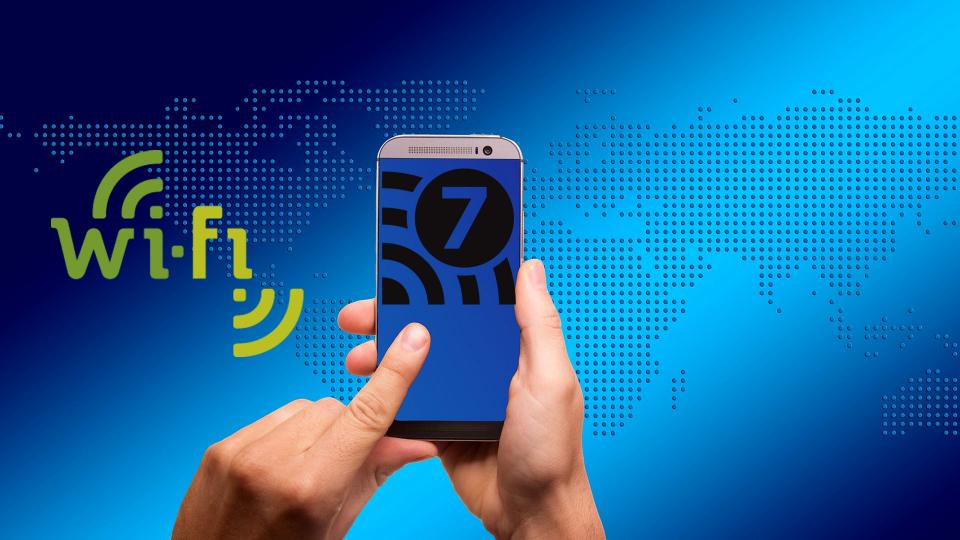.
Wireless connections, better known as wireless connections or Wi-Fi, are largely consolidated and therefore, at some point you will make use of Wi-Fi 7.
But what is Wi-Fi 7 anyway and why will it be important for anyone who needs to connect to the Internet or even on a local network and when will it be available?
It is to answer these and other questions common to the subject that we have prepared this content.
What is WiFi 7?
In the simplest and most direct way possible, Wi-Fi 7 is the seventh generation of the Wi-Fi standard and which in turn is the technology that makes it possible to connect to a network, without the need for a cable between the user’s device. and a network device and that can be a router, a switch or even a server.
Even when what is now called the fifth generation, the nomenclature adopted for each Wi-Fi standard was different, and the standard was generically known as IEEE 802.11 and each generation received a letter to differentiate the version specifications, as follows : IEEE 802.11a, IEEE 802.11b, IEEE 802.11g, IEEE 802.11n and IEEE 802.11ac.
According to the old nomenclature, Wi-Fi 7 would be IEEE 802.11be.
But it was on the occasion of the launch of the sixth version of Wi-Fi (or in the old form, Wi-Fi IEEE 802.11 ax), that the group of companies responsible for the development of associated technologies, the WiFi Allianceproposed changing the names of each version.
The first Wi-Fi 6 network equipment, such as Wi-Fi modems and routers, were launched at the end of 2019 and devices (notebooks, smartphones, etc.) The last standard was massively used and the seventh version was announced, which according to some companies, should be available on equipment in 2023.
It must be remembered that in the case of a notebook or smartphone, for example, the ability to use each standard depends on the processor, which means that chip manufacturers such as Intel, AMD and Qualcomm need to include the new specifications in the next releases of CPUs, so that you have equipment capable of taking advantage of Wi-Fi 7.
What are the main features of Wi-Fi 7?
As with every new version of Wi-Fi, the seventh version promises higher data transfer rates, which for the layman means higher Internet connection speeds.
But how much bigger?
Under ideal conditions, Wi-Fi 7 is expected to be able to deliver data transfer speeds 4.8 times faster than Wi-Fi 6 and 13 times faster than Wi-Fi 5.
Under optimal conditions, a new generation router can reach up to 46 Gbps, according to the manufacturer Tp-link. In practice, this value is only possible on top of the line equipment and, therefore, the most expensive and intended for professional use.
Another characteristic that determines the performance of the network is the latency, which, simply put, is the time interval between sending and receiving a data packet and which, in the case of the seventh generation, is at least 100 times better compared to Wi-Fi. Fi 6.
Why does Wi-Fi 7 outperform?
The superior performance achieved by Wi-Fi 7, compared to the previous version, comes from the improvement of some technologies already used in the sixth version:
- MU-MIMO – the MU-MIMO concept (Multi-User, Multiple Input, Multiple Output) that allows several users or devices connected to the same router, using several inputs and outputs of data simultaneously and that in the sixth version was 8, but which was expanded to 16 in the new one;
- Bandwidth – the bandwidth has also doubled and in addition to operating at 2.4 and 5 GHz, it also operates at 6 GHz, this one with 320 MHz channels and that in version 6, it was 160 MHz;
- 4K-QAM – QAM (Quadrature Amplitude Modulation) is basically responsible for the data packets of the signals used in wireless transmission and which in the seventh version jumped from 10 to 12 bits, which means 20% gain in transmission rate;
- Multi-RU – RU (Resource Unit) refers to the assigned resource unit and that in version 6, it was unitary and becomes multiple and on demand, which in practice implies that if a user / device needs more resources allocated , this happens automatically and dynamically;
- Preamble Puncturing – this feature basically aims to optimize the use of Wi-Fi channels in such a way that there is less susceptibility to interference, which is reasonably common in areas with signal density, or in other words, with many wireless devices;
- Multi-Link Operation – allows devices to simultaneously send and receive data on different frequency bands and channels, thus achieving higher throughput and lower latency.
What are the advantages of Wi-Fi 7 in practical terms?
For those who do not understand – or do not want or need to understand – this world of acronyms, terminologies and names of embedded technologies, it is difficult to understand in practical terms what is gained by making use of the new version of wireless connection.
In practice, Wi-Fi 7 improves the wireless connectivity scenario in some situations, such as:
- Wired network – Wired computer networks, particularly gigabit networks, have higher data transmission speeds than wireless networks of previous versions. With Wi-Fi 7, this is no longer true and with it the need to have network cables when high network speeds are required;
- Video streaming – the seventh version of the standard will make video streaming up to 8k possible;
- Number of devices – the number of connected devices and the quality / speed of data transmission, increases. Thus, in companies or even in a home, with a greater number of users, SmartTVs and IoT devices can be connected to the same router;
- Online gaming – many of the top online games require great connection speeds and very low latency, which if not, affects the gaming experience and even the player’s performance. With the arrival of the seventh version, this will no longer be a problem;
- Metaverso – applications based on metaverse and virtual reality, generally demand great performance in terms of connectivity, which would not find a bottleneck in a seventh generation wireless network to function properly;
- Applications – applications with high demand for real-time execution, heavy use of cloud computing, home office and any situation that requires a lot of data exchange with speed.
Although it all seems very good and excites many technology enthusiasts, the truth is that in the most optimistic forecasts the first equipment capable of using Wi-Fi 7 should hit the market in the second half of 2023, and according to a press release from Wi-Fi Alliance, the official launch will only be in 2024.
That is, manufacturers that manage to launch products before, may have homologation problems.
However, this may not even be the biggest obstacle.
There’s no point in getting a router capable of delivering the highest speed promised, as well as a notebook or smartphone compatible with Wi-Fi 7, if your ISP doesn’t also deliver connectivity of the same order. It would almost be like driving a Ferrari on a dirt road.
Another point to be observed should be the price of the equipment. At the time of the first Wi-Fi 6 routers, it was impossible to find good branded equipment that was not at least 5 times more expensive than the fifth generation.
Conclusion
Wi-Fi 7 promises to deliver a much superior wireless connectivity experience for all Internet applications that require very high speeds.
.









